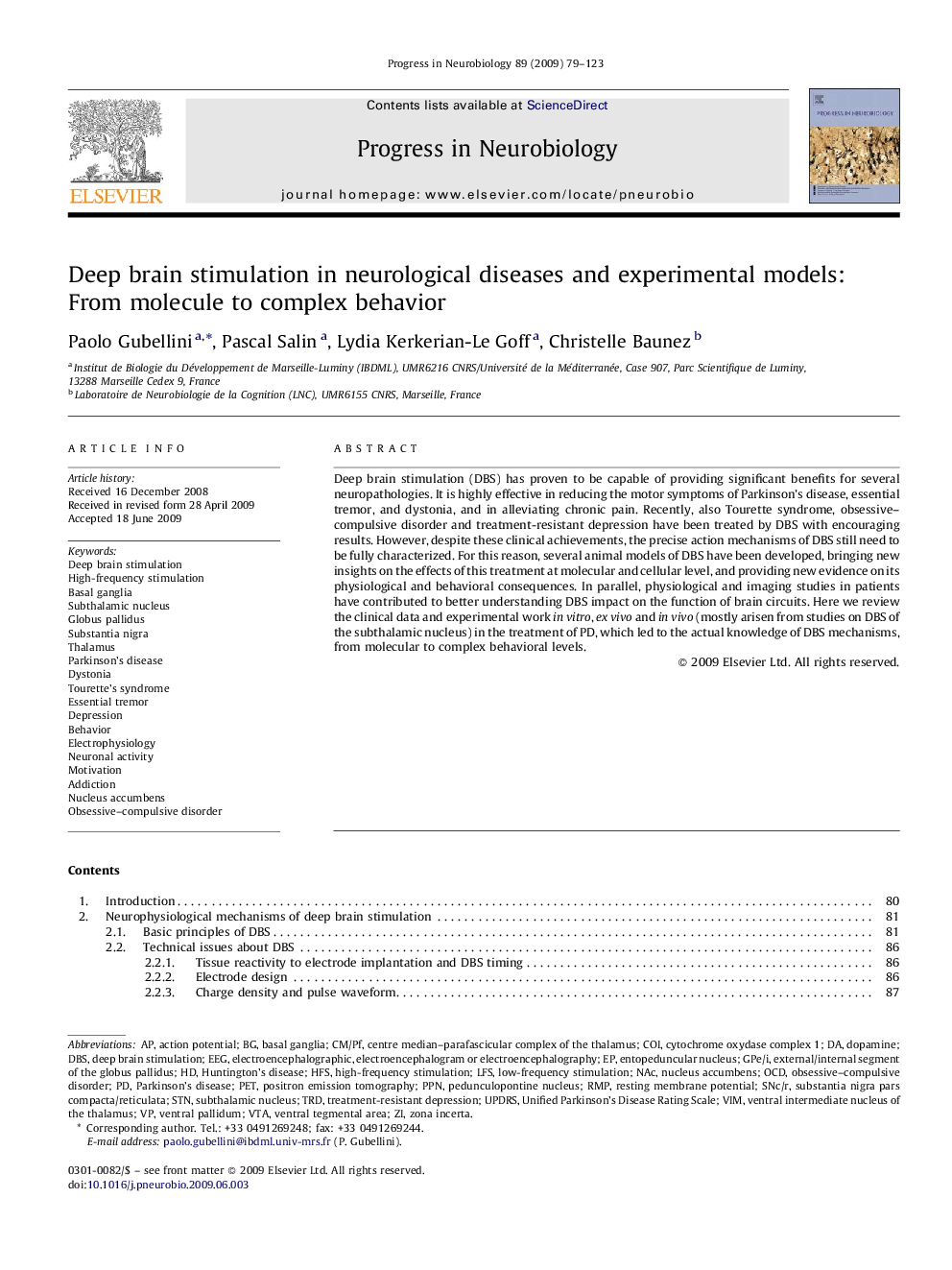| Article ID | Journal | Published Year | Pages | File Type |
|---|---|---|---|---|
| 4353819 | Progress in Neurobiology | 2009 | 45 Pages |
Deep brain stimulation (DBS) has proven to be capable of providing significant benefits for several neuropathologies. It is highly effective in reducing the motor symptoms of Parkinson's disease, essential tremor, and dystonia, and in alleviating chronic pain. Recently, also Tourette syndrome, obsessive–compulsive disorder and treatment-resistant depression have been treated by DBS with encouraging results. However, despite these clinical achievements, the precise action mechanisms of DBS still need to be fully characterized. For this reason, several animal models of DBS have been developed, bringing new insights on the effects of this treatment at molecular and cellular level, and providing new evidence on its physiological and behavioral consequences. In parallel, physiological and imaging studies in patients have contributed to better understanding DBS impact on the function of brain circuits. Here we review the clinical data and experimental work in vitro, ex vivo and in vivo (mostly arisen from studies on DBS of the subthalamic nucleus) in the treatment of PD, which led to the actual knowledge of DBS mechanisms, from molecular to complex behavioral levels.
